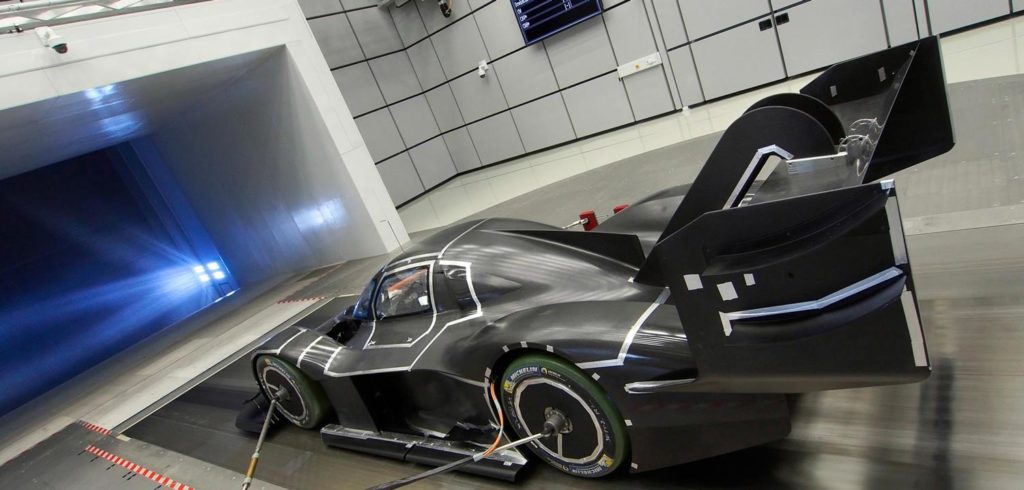Volkswagen’s first fully electric racing car, the ID R Pikes Peak, has been designed to tackle the extremely demanding conditions found on the world famous hill climb Pikes Peak in Colorado.
“The start line is located at an altitude of almost 2,900m, with the finish at 4,300m above sea level. The low air pressure up there means that the aerodynamic conditions are different to those at a race track on flat land,” explained François-Xavier Demaison, technical director at Volkswagen Motorsport and project manager for the ID R Pikes Peak.
The relatively open regulations gave the engineers far more leeway with which to design the chassis and rear wing of the car than in other racing disciplines.
During the winding 19.99km drive to the summit of Pikes Peak near Colorado Springs, a top speed of around 240km/h can be reached – this is relatively low for a prototype like the ID R Pikes Peak as it could theoretically do far more than this.
“For this reason, we concentrated mainly on achieving optimal cornering speeds. The entire chassis is designed to generate as much downforce as possible, without causing too much aerodynamic drag,” said Demaison.
The most visually striking result of this strategy is the seemingly oversized rear wing on the ID R Pikes Peak. “The altitude at Pikes Peak means that the air we are driving through is on average 35% thinner. As a result, we lose 35% of our downforce compared to a racetrack at sea level. The huge rear wing allows us to compensate for some of this lost downforce,” explained Willy Rampf, a technical consultant on the project.
“The imaginative aerodynamic development means that we will still achieve maximum downforce greater than the weight of the car during the hill climb.”
Volkswagen Motorsport used a scale mode (1:2) to test a host of different variants of the Pikes Peak racer in the wind tunnel. The final touches were then made to a full-size chassis in the Porsche development center in Weissach, Germany. “It was greatly beneficial to be able to use resources from within the group.”
New components could be produced quickly on a 3D printer. “We printed about 2,000 parts. In doing so, we saved a lot of time,” said Dr Hervé Dechipre, a CFD engineer at Volkswagen Motorsport.
The electric engine on the ID R Pikes Peak needs to be cooled efficiently. However, the need for fresh air is far less than in the case of a combustion engine. Furthermore, it is not necessary to guide any intake air to the two electric engines, which together generate 500kW (680ps). This made it possible to reduce the size of the inlet ports in the chassis, which are always a big drawback in terms of aerodynamics. In contrast, the thin air at altitude has a negative effect on the efficiency of the cooling.
To develop the system the company used simulation software from Ansys. “We could not manage this solely with the data from the wind tunnel, where it is not possible to recreate the thin air, for example. The simulation was a great help in determining the dimensions required for the cooling system,” said Demaison.
The team are due to undertake the first test run on the route by the end of the week in final preparation for the race, which takes place on June 24, 2018.


